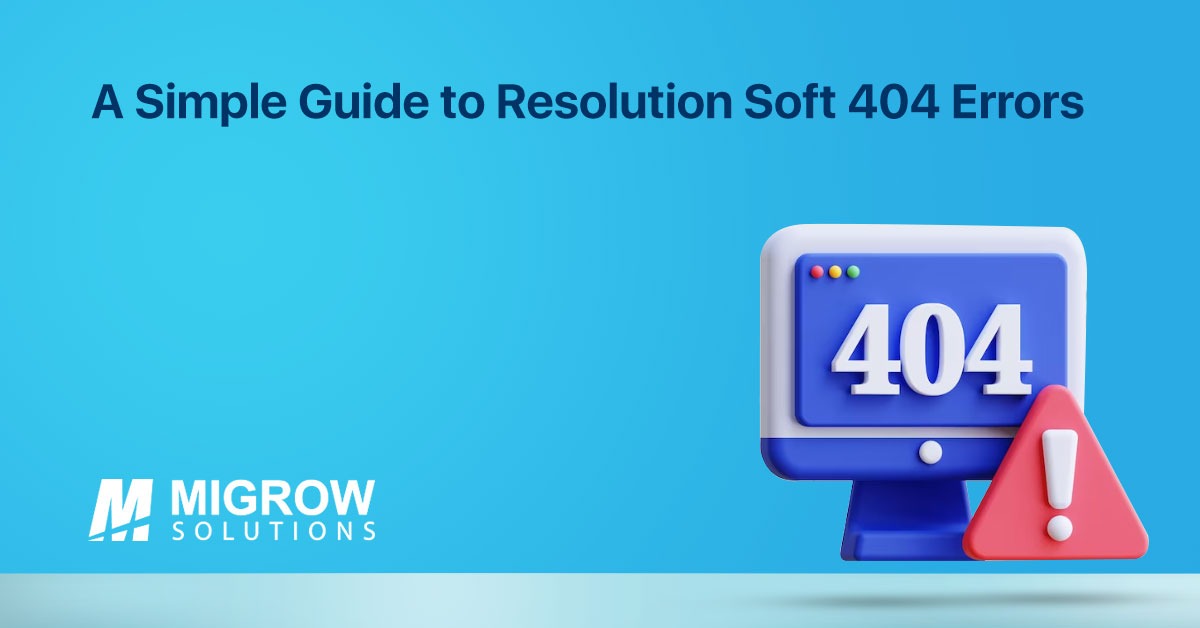
A Simple Guide to Resolution Soft 404 Errors
Soft 404 errors can be a significant hurdle for website performance and SEO. Understanding what they are and how to address them is crucial for maintaining a healthy online presence. In this guide, we'll delve into the nuances of soft 404 errors, their causes, and provide a step-by-step process for resolution. Migrow Solution, a premier digital marketing agency in Chennai,
What Is A Soft 404 Error?
While a regular 404 error occurs when a web page is genuinely unavailable, a soft 404 error happens when the server incorrectly signals a "200 OK" status to Google, leading it to interpret the page as a 404 error. This discrepancy can be detrimental to SEO, as soft 404 pages get indexed, affecting your site's visibility.
Causes of Soft 404s:
Several factors contribute to soft 404 errors. Common causes include pages with minimal or no content, irrelevant redirects, unintentional blocking of Google from rendering essential files, and the use of phrases resembling 404 messages. Identifying these issues is the first step toward resolution.
Why Soft 404s Are Bad for SEO:
Soft 404 errors mislead search engines into indexing non-existent pages, wasting crawl budgets and diminishing search visibility. Google allocates crawl budgets based on page popularity and content age, and high soft 404 errors can misdirect these resources to non-essential pages, negatively impacting organic search performance.
Advanced Technical Solutions: Migrow Solution SEO Expert team implements advanced technical solutions, such as configuring servers to return the correct status codes (404/410) for invalid pages. This optimization reduces the soft 404 percentage, aligning your site with search engine guidelines.
How Google Sees Soft 404s:
Google now evaluates soft 404s based on device type, potentially causing discrepancies in error detection between desktop and mobile versions. This underscores the importance of monitoring soft 404s beyond Google Search Console to ensure accurate assessments.
How to Find Soft 404 Errors:
Utilize tools like Google Search Console, Screaming Frog, or Xenu Link Sleuth to identify soft 404 errors. These tools can pinpoint broken links, validate URLs, and highlight pages that need attention.
Fixing and Resolving Soft 404s:
Verify Soft 404 Status: Check if Google has correctly identified a soft 404. Use the Coverage Report in Google Search Console to inspect flagged pages, validate those that are valid, and request indexing for improvements.
Improve Page Content: If a legitimate page is marked as a soft 404, enhance its content to make it more valuable and crawlable. This simple step can eliminate soft 404 errors caused by thin content.
De-index the Page: Keep the page on your site but instruct search engines not to index it by adding a no-index directive. This ensures that the page is not displayed under error reports, although it will still be listed in the excluded report.
Configure Server for Proper Error Code: Ensure your server is configured to return the correct status code (404/410) for invalid pages. Deleting pages and configuring the server accordingly can reduce the soft 404 percentage.
Redirect Using a 301 Redirect: If a page is moved to a new location, implement a 301 redirect through the .htaccess file. This informs search engines of the change and prevents the display of a 404 error for an existing page.
By systematically addressing soft 404 errors through these steps, you can enhance your website's visibility, improve search performance, and ensure a positive user experience. Regular monitoring and collaboration between developers and SEO experts are key to preventing the accumulation of soft 404 errors.
Migrow Solution, a premier SEO agency in Chennai, stands out for its expertise in calculating SEO campaign ROI. Our approach delivers actionable insights, ensuring optimal marketing success.


